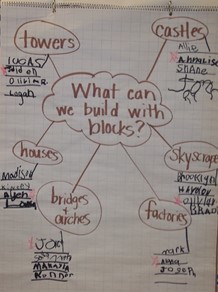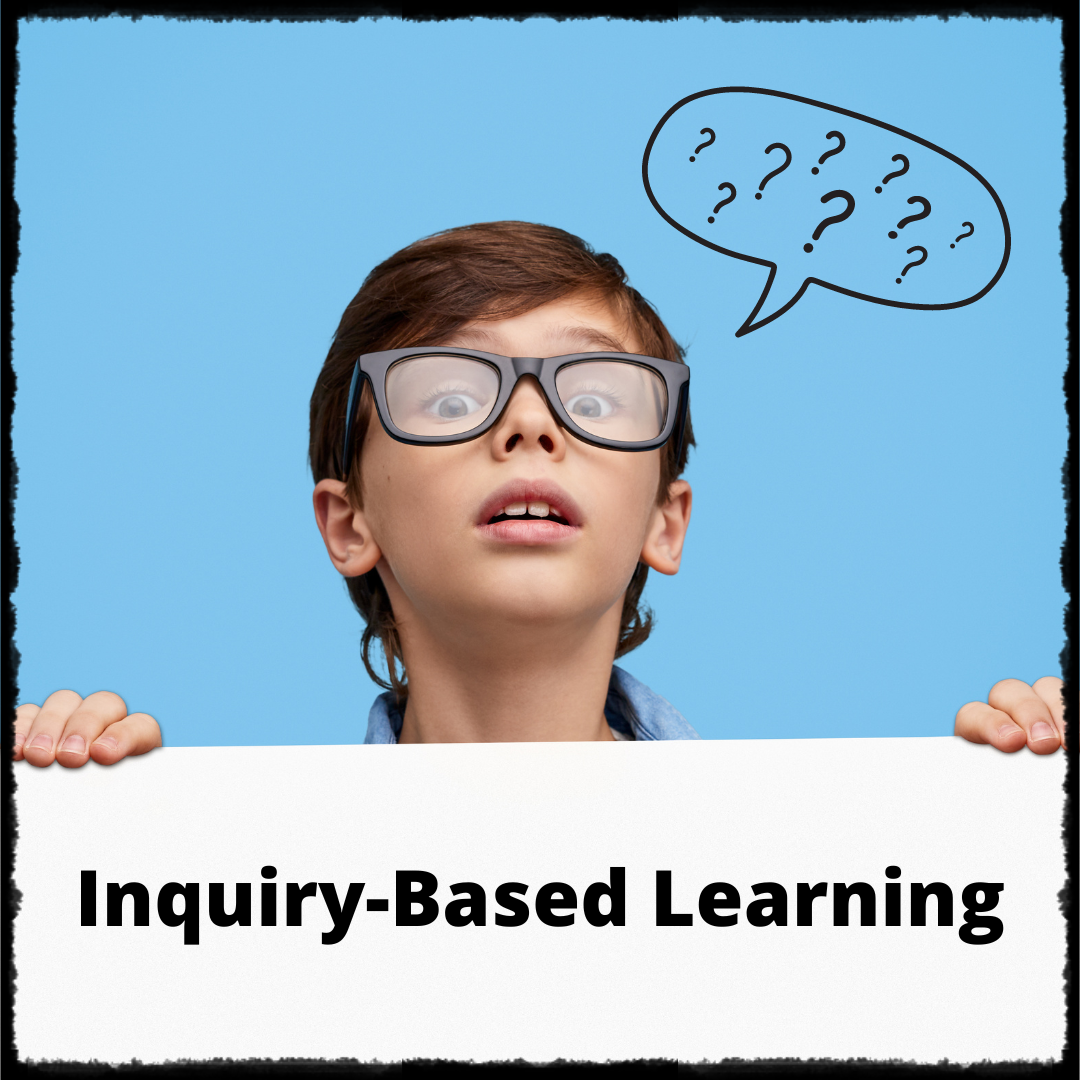Our students are so curious! Using their natural curiosities to lead your instruction is the first step to planning a unit of Inquiry Based Learning.
What is Inquiry-Based Learning?
Inquiry-based learning (IBL) is a student-centered process for learning that has been around since the 1960’s. It is a way of learning through curiosity, asking questions, investigating, exploring, and generating even more questions. The students become active participants in investigating and taking responsibility for gaining knowledge on the topic at hand. This way of learning allows students to fully comprehend the meaning of what is being learned. Rather than memorizing what is taught to them, the students are able to share their questions and dig deep to get answers. This leads to a deeper understanding of the content. IBL is not a teaching technique; it is a process or pedagogy for learning.
4 Basic Steps that worked in my own elementary classroom.
1. Start With a Broad Idea
Your broad idea can come from your students’ interests and curiosities, or you can orchestrate a way to spark their interest in a topic of your choice.
Choose a topic that is directly from your State Standards or District Curriculum. Present this topic to your students in a way that will trigger questions and natural curiosities.
You can create an inquiry unit of study that aligns with your standards, while allowing the students to take the lead. The more you teach in this way, the better you will feel about not spoon-feeding your students the state standards.
For example: If you are responsible for teaching the four seasons and differentiating between them, you might use “seasons” as your broad theme and allow your students to take it in whatever directions they are interested. They may be interested in what to wear during each season. They could choose weather. They may be interested in what the trees or plants and animals do in the different seasons. Or maybe they are super curious about why we have seasons. Let them create the path they want to follow in order to study the broad theme mapped out in your state standards.
2. Spark Students’ Interest with a driving question
Plan for a way to spark interest in order to get students to start thinking about your theme. Ask them what they wonder about the topic you have in mind. Make it fun! Go for a walk outside or while you are at recess, initiate conversation that may get them talking more or thinking more about your broad topic. You can set up experiences for them to explore during play. You want to find out what your students know about the broad theme and what sparks their interest, keeping in mind your goal for learning. You can see how to dig deeper by using a KWL chart, Wonder Web, or a simple plain piece of paper.
Wonder Web
This is my favorite way to begin an inquiry unit. You write the theme in the middle of the web. Ask the students what they want to know or what they “wonder” about your theme. This is really fun! You write down all of their curiosities around the center of the “I Wonder…” bubble. In this example you see that our class wrote the question, “What can we build with blocks?” in the center of our web.

First, we explored with our set of classroom blocks. The kids were able to experiment with building different types of structures. They signed up to become experts on the type of structure that interested them.
3. Investigate and Discover
Authoritative Sources
You will provide resources that your students can use to find out more about their questions. You can use books, photos, videos, lessons that you teach and lessons from the web. You can also call in an expert or take a trip to investigate or discover. In this step the students are investigators! They often find answers that lead to more questions. You continue this process until you come to your conclusion about your topic.
The investigation phase of IBL is the perfect time to pull in the other learning standards to strengthen and develop. During their investigations you can work on phonics skills, reading, writing, and math! Some great ways to do this are listed below.
Centers
Learning Centers are a great part of the day to integrate your students investigations and research with other content areas like reading, writing, spelling, and even math. Reading and writing can always be integrated into IBL projects. Simply take your regular planned centers and use your IBL unit as the subject to focus on. They can read to investigate, draw to document their findings, and write all about what they are learning. Some ideas for how to use centers during the investigation phase of IBL are listed below:
- Study photos of the inquiry topics. They can make observations and write about what they discover.
- Do partner reading on books about the topic.
- Write about what they have discovered.
- Create a model, painting, or diagram to show their learning or ideas.
- Read both fiction and nonfiction books that fit your topic and have discussions about different genres.
- Conduct experiments or investigations for discovery.
- Search for word families or other phonics skills that have been taught.
- Build structures and creations.
- Measure and calculate.
Guided Reading
Use this time to meet with partners or groups that are working on an investigation. Read leveled books with your group that are about the topic and work on specific parts of your IBL process with your small group. Teach new phonics skills to your group while tying it in with your topic. If you choose to make expert groups in each category, you can use this time to meet with the small expert groups to go over their findings.
4. Show What You Know!
In this final stage, your students organize their findings, answer the driving question, and present what they’ve learned.
Part of IBL is sharing your knowledge with others. You can use different graphic organizers and maps to show what the students have discovered. Then they take what they learned and create something to show it. Some great ideas I’ve seen students come up with include:
- Classroom Museums—Turn your classroom into a museum and invite others to visit.
- Parades—Parade through your school showing what you’ve learned.
- Plays—Conduct a play and invite guests.
- Presentations—Invite parents, staff, or other classrooms to see you present your discoveries.
- Google Slides—Present google slides to their peers or to other classrooms of students.
- Posters and Bulletin Boards—Create a bulletin board that displays your questions and discoveries in your hallway for all to see.
- Classroom—Turn your classroom into a habitat for others to visit and explore.
Inquiry-based learning is so much fun for both teachers and students. Students are engaged because they are the driving force for discovering. Many teachers are nervous about letting students take the lead. However, you quickly learn that you can still conquer every learning goal while letting students’ inquiries lead the unit. It is an all inclusive way of teaching. It allows all students to learn and grow while being fully engaged in the learning.
Blog Bullet Points:
- start with a broad idea from your teaching standards
- spark your students curiosities with a driving question
- investigate and discover
- show what you know
To Learn more or earn Graduate Level Credit Hours for the time you spend planning IBL units for your own classroom, click here!

